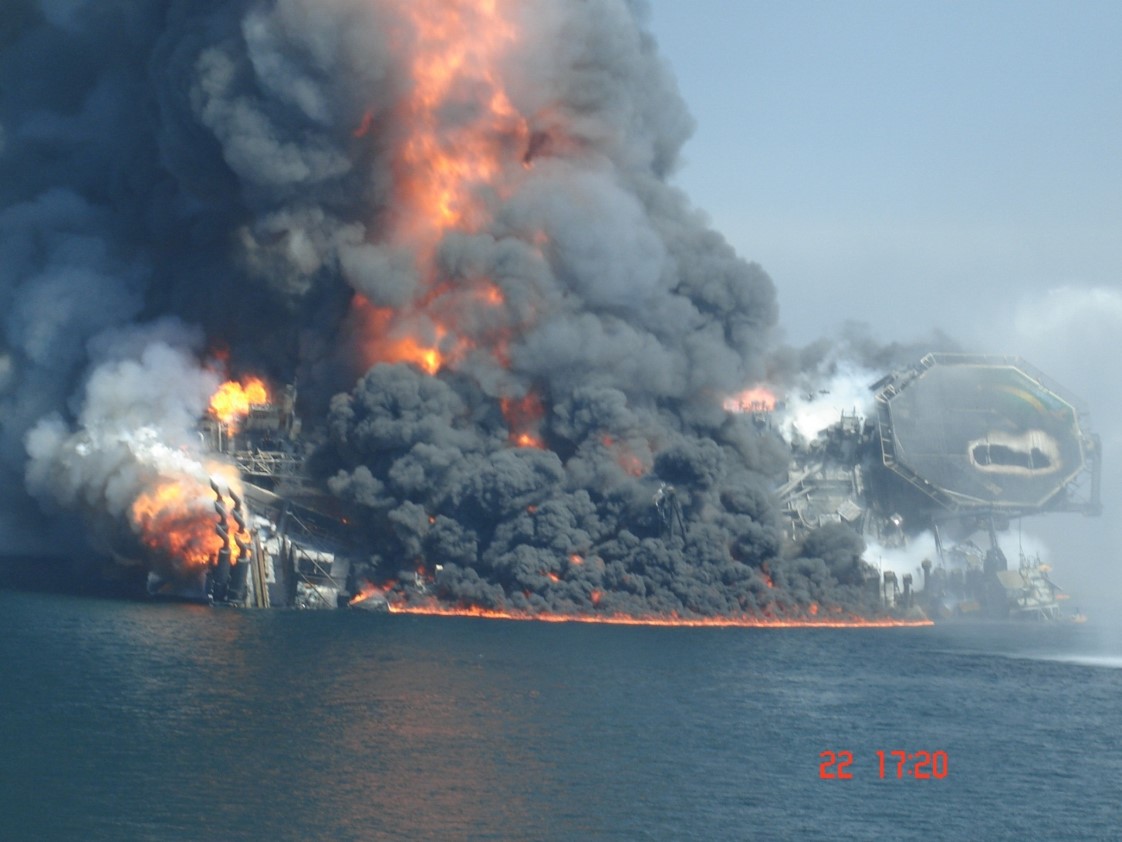Deepwater Horizon Retrospective, Part III
May 12, 2015
April 20, 2015 marked the five-year anniversary of the Deepwater Horizon explosion in the Gulf of Mexico. As our Texas Jones Act lawyers report, the tragedy had a dramatic effect not just on the lives of the brave crew who worked on the vessel – 11 men aboard died, and 17 were injured – but also on thousands of people and businesses throughout the Gulf Coast.
This four-part series will outline some of the key factual findings and judicial holdings arising out of the “Macondo” incident, as follows:
- Part I: The Incident & Resulting Litigation
- Part II: Key Factual Findings
- Part III: Legal Fault
- Part IV: Other Legal Issues
PART III: Legal Fault
Texas offshore injury lawyers and Louisiana offshore injury lawyers who represent injured offshore workers should be mindful of the teachings of the Deepwater Horizon litigation, including the findings of fault made against the various defendants– British Petroleum (BP), Transocean, and Halliburton.
This article will focus on the following topics related to legal fault in the Deepwater Horizon litigation:
- Allocation of Fault
- Transocean’s Negligence
- The Significance of a Gross Negligence or Willful Misconduct Finding
- Willful Misconduct Under the Clean Water Act
- Gross Negligence Under the Clean Water Act
- BP’s Gross Negligence
- BP “Single Act” Gross Negligence — Negative Pressure Test
- BP Cumulative Gross Negligence
- BP Liable for Enhanced Clean Water Act Penalties
- BP Not Liable for Punitive Damages
***
Legal Fault
Allocation of Fault
Judge Barbier found BP was liable for gross negligence, recklessness, and willful misconduct.
Transocean and Halliburton were only liable for ordinary negligence.
Judge Barbier allocated fault as follows:
- BP – 67%
- Transocean – 30%
- Halliburton – 3%’
Transocean’s Negligence
The Court found that Transocean was negligent in several respects, all of which could have significance for Texas Jones Act attorneys pursuing claims for injured maritime workers:
- The drill crew misinterpreted negative pressure test
- The drill crew failed to detect the pressure anomaly
- The drill crew failed to perform a flow check and immediately shut in well
- The drill crew failed to divert flow overboard
- The Master failed to timely activate EDS
- Transocean failed to properly maintain BOP
Judge Barbier found that Transocean was not grossly negligent, however, noting that:
- “There were numerous instances of the drill crew being responsive to well, and such conduct “hardly reflects a conscious disregard for a known risk or an extreme departure from standard of care.”
- BP’s failures created the catastrophic situation; Transocean’s were largely an inability to stop the situation BP had created.
- Transocean’s marine crew took heroic actions following the explosions; “BP’s conduct, by contrast, lacks similar balance.”
- “Another point about Transocean’s well control failures is that they occurred in a relatively short time frame and in the context of a situation that escalated rapidly. The same can also be said about the master’s failure to timely EDS. BP’s misconduct, by contrast, was spread over a longer time frame. Thus, while Transocean had limited time to react properly, BP could consider its choices.” Court 9.4.14 Opinion ¶ 554.
- “As to Transocean, the Court has identified several instances where Transocean’s conduct fell below the standard of care. . . . However, BP had a hand in most of these failures.” Court 9.4.14 Opinion ¶ ¶ 549-50.
The Significance of a Gross Negligence or Willful Misconduct Finding
- A finding of gross negligence or willful misconduct was significant in the Deepwater Horizon litigation primarily because such a finding meant BP could be subject to enhanced penalties under the Clean Water Act (“CWA”).
- Under the Clean Water Act, the maximum penalty for negligence is $1,100/barrel.
- The maximum penalty for gross negligence or willful misconduct is $4,300/barrel.
- Because as many as 5 million barrels of oil were spilled when the Deepwater Horizon exploded, a finding of gross negligence or willful misconduct could make a $14 billion difference for BP.
Willful Misconduct Under the Clean Water Act
- There is a difference between willful misconduct and gross negligence. Generally speaking, willful misconduct is more difficult to prove.
- Willful misconduct is an intentional act or omission, with either knowledge of probable injury or reckless disregard for probable consequences.
- “Reckless disregard” means the defendant must be subjectively reckless. In other words, the plaintiff must prove some degree of intent on the part of the defendant.
- BP and the United States Government agreed on the definition of willful misconduct. They disagreed, however, on the definition and requirements for a gross negligence finding.
Gross Negligence Under the Clean Water Act
- BP argued that, like willful misconduct, gross negligence also requires the defendant to have acted with a reckless disregard for the probable consequences of its actions. In other words, the United States Government would have to prove that BP acted with some degree of subjective intent.
- The United States Government argued that, to the contrary, gross negligence requires an extreme departure from the standard of care required under the circumstances. That interpretation means gross negligence is an objective test based on the defendant’s conduct, not a subjective test based on the defendant’s intent.
- Judge Barbier adopted the United States Government position. He found a subjective intent to be reckless is not required for gross negligence. Only an objective “extreme departure” from the ordinary standard of care is required.
- In any event, because the Fifth Circuit’s Citgo opinion makes the issue unclear, Judge Barbier found that BP was grossly negligent even if subjective recklessness must be proven.
- Citgo (5th Cir. 2013): A Louisiana district court held no enhanced Clean Water Act penalties could be levied against the defendant. The court applied Louisiana state law for gross negligence, which requires a finding of subjective recklessness. The United States Government appealed and argued state law was the wrong standard, but the Fifth Circuit affirmed, with a confusing caveat that “[i]t does not appear that the district court relied on the state-law definition anyway.”
BP’s Gross Negligence
- The Court found BP had committed both a single act that in and of itself rose to the level of gross negligence, and also “cumulative” gross negligence comprising several acts that totaled together to constitute gross negligence.
- BP “Single Act” Gross Negligence – Negative Pressure Test
- BP knew or should have known that deeming the negative pressure test successful and displacing mud from well would probably result in physical injuries, death, and severe property damage.
- Company man and onshore engineer both acted recklessly, qualifying as both “willful misconduct” and “gross negligence.”
- BP Cumulative Gross Negligence
- A series of negligent acts can, when taken together, amount to gross negligence.
- Judge Barbier identified multiple negligent acts by BP that added up to gross negligence:
- Drilling the final 100 feet with little or no margin
- Running production casing with float collar in unconverted mode and without shoe filter
- Failing to reverse circulate well to verify whether float collar converted
- Not conducting an acoustic Cement Bond Log (“CBL”)
- Using leftover circulation material (LCM) as a spacer for the displacement and negative pressure test
- Misinterpreting the negative pressure test
- Allowing simultaneous operations to occur during displacement
- Failing to provide a displacement schedule to Transocean drill crew
- Pumping foamed cement without a successful stability test
BP Liable for Enhanced Clean Water Act Penalties
-
- As a result of the single act and cumulative gross negligence, BP was eligible for enhanced Clean Water Act penalties.
BP Not Liable for Punitive Damages
-
- The Court’s findings regarding punitive damages were mixed, but Judge Barbier ultimately found no punitive damages could be assessed against the company in the Fifth Circuit:“[T]he maritime rule in the Fifth Circuit is that operational recklessness or willful disregard is generally insufficient to visit punitive damages upon the employer. Rather, the conduct must emanate from corporate policy or that a corporate official with policy-making authority participated in, approved of, or subsequently ratified the egregious conduct.”“The First Circuit appears to also use the managerial agent theory, but with the added requirement that there be “some level of [corporate] culpability for the misconduct.” The Court finds that punitive liability would attach to BPXP under this standard as well.”
- “The Ninth Circuit’s maritime rule follows the Restatement, which allows punitive damages against the corporate entity when the actor was in a “managerial capacity” and performing within the scope of his employment. The Court finds that Vidrine and Hafle were in a “managerial capacity” and their actions arose within the scope of their employment.
- “Finally, the Court finds that the conduct of BP’s employees was egregious enough that exemplary or punitive damages would be appropriate. However, in light of Fifth Circuit precedent, the Court concludes that BP is not liable for punitive damages.”
Morrow & Sheppard LLP Represent Injured Offshore Workers
Morrow & Sheppard are Texas Jones Act attorneys who represent injured offshore workers and their families. We have membership in the Maritime Law Association. We also have unique experience, having spent years working for individuals, as well as past careers as partners at prestigious firms, where we worked for the large corporations that now pay compensation to the clients we represent.
Please contact us now for a 100% free and confidential consultation.
- Home
- |
- Personal Injury
- |
- Deepwater Horizon Retrospective, Part III
















































